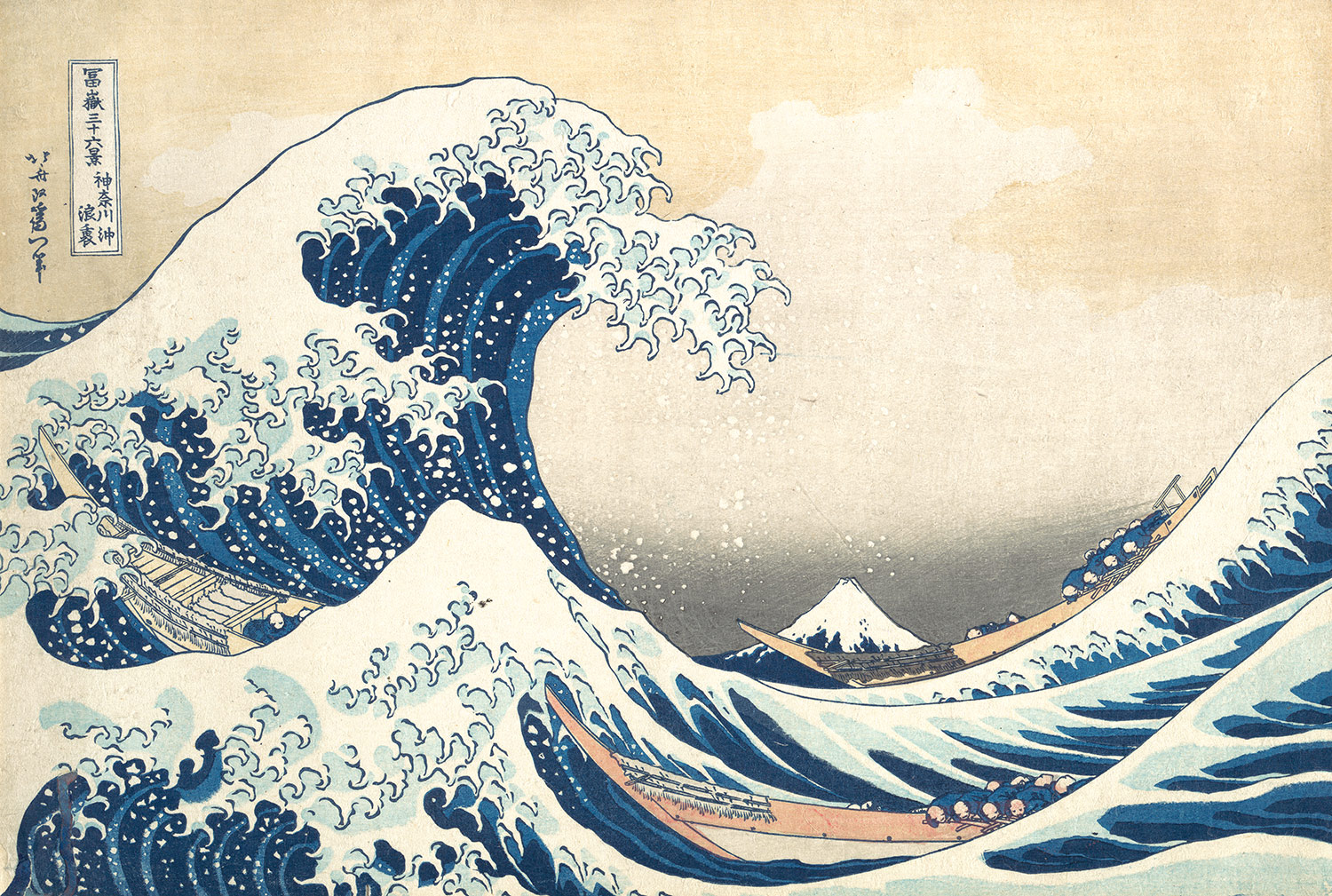Art Nouveau, which means “new
art,” was very popular from the 1880s to around 1914. Art Nouveau influenced
many aspects of life including architecture, applied arts, and illustration. It
evolved from historicism that dominated design of the 19th century and formed a
connection between Victorian clutter and modernism.
Art Nouveau was influenced by Ukiyo-e,
which means “pictures of the floating world.” This was a period in Japanese art
when woodblock prints, and paintings were popular. It mixed the traditional picture
scrolls with decorative arts. Katsushika Hokusai was one of the more famous
artists of the Ukiyo-e time period. He produced an estimated 35,000 works for
several different mediums. Hokusai captured album prints, historical events,
landscapes, and social behaviors. He began with “yellow-backs,” which are
booklets. Hokusai created over 270 yellow-backs in his lifetime
(katshushikahokusai.org).

"The Great Wave at Kanagawa" Katsushika Hokusai. 1831-1833
Source: http://www.metmuseum.org/toah/works-of-art/JP1847
Another artist who used the woodblock
system was Ando Hiroshige. This is the man who inspired European impressionists
with the way he used white space, and his landscapes. Hiroshige related to
ordinary people, which made his art more realistic (Department of Asian Art).
“One Hundred Famous Views From Edo” Ando Hiroshige 1857
source: http://www.ibiblio.org/wm/paint/auth/hiroshige/plum.jpg
Japanese calligraphy and silhouettes
influenced Europeans. Books were developed to teach the Europeans about the
Japanese techniques. It is interesting to look at two pictures side by side and
see the lines, and abstract shapes. Monet was one of the impressionists that
was intrigued by the woodblock prints. A Japanese bridge in his garden inspired
Monet. This occupied his paintings for 20 years; he painted it at different
times of day because of the beauty of the pond (Gontar).

“Water lilies and Japanese Bridge” Claude Monet 1890
Source: http://www.thecultureconcept.com/circle/monet-pisarro-sisley-renoir-creating-first-impressions
There was an addition of Japanese ornaments
to Art Nouveau. In earlier pieces, ornaments were just a decorative addition to
the artwork, for example, on a building. Now in Art
Nouveau, everything evolved around and from the ornament uniting embellishment
with structure and function, which energized the design process. “The art in Europe turned away from
realism toward expressionism and modern art” (Himes). Artists like Monet and Van
Gogh started to use a more “oriental art.”
All
of these artists had an interesting line and space that were inspired by
Japanese art. I think it is very interesting that as technology improved, the
movement of art followed. The art changed, in my opinion, for the better.
Incorporating interesting and unexpected lines with novel spaces to accent the
paintings makes them appealing. The era of Art Nouveau helped evolve art and
how one perceived the world. It was creative and forward thinking. Monet embraced
it as he started to paint details less precise and more with a fog-like
presentation, termed impressionism, which I think gives them an elegant and
peaceful touch. This impressionistic movement in Monet’s works made him one of
the most influential artists of all time. Art was beginning to be created for
the ordinary person not only the rich. This accessibility is key to an artist’s
influence on culture and society and brings more culture to people to brighten
their lives.
Citations:
Department of Asian Art. "Woodblock Prints in the Ukiyo-e Style". In Heilbrunn Timeline of Art History. New York: The Metropolitan Museum of Art, 2000. Web. 02 Feb.2014. http://www.metmuseum.org/toah/hd/ukiy/hd_ukiy.htm
Gontar, Cybele. "Heilbrunn Timeline of Art History." Art Nouveau. Web. 02 Feb. 2014. http://www.metmuseum.org/toah/hd/artn/hd_artn.htm
Himes, Sharon. "Influence of Japanese Art by Sharon Himes : Art History on the Art Cafe Network." Influence of Japanese Art by Sharon Himes : Art History on the Art Cafe Network. Web. 02 Feb. 2014. http://www.artcafe.net/ah/japan/index.html
"Katsushika Hokusai Biography." Katsushika Hokusai Biography. Web. 02 Feb. 2014.
http://www.katsushikahokusai.org/biography.html

No comments:
Post a Comment